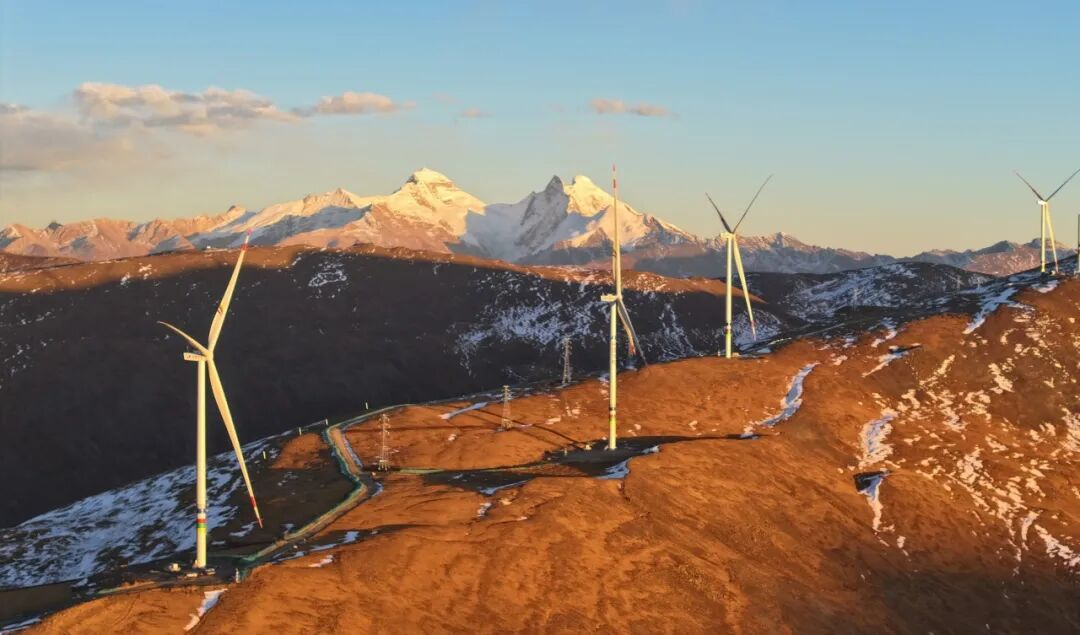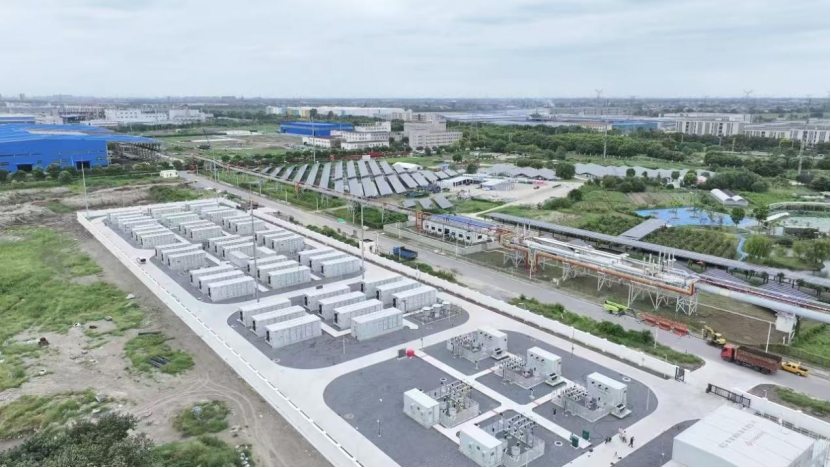Source: China Electric Power News
On November 17, against the backdrop of the majestic Yarlha Shampo Snow Mountain, the China Huadian Corporation’s Wind Power Project in Qonggyai County - whose highest turbine installation point sits at an altitude of 5,370 meters - was officially connected to the grid. The project is not only the largest single-unit-capacity wind power project in the Tibet Autonomous Region, but also the world's highest-altitude operating wind power project, injecting new momentum into green and low-carbon development on the Tibetan Plateau.
Located in Zhongdui Village, Qonggyai County, Shannan City, the Huadian Qonggyai Wind Power Project has a total installed capacity of 60 MW. It is equipped with eleven 5.0 MW turbines and one 6.25 MW turbine, along with a supporting 12 MW/48 MWh grid-forming energy storage system. Once in operation, the project is expected to supply clean electricity sufficient for about 120,000 households annually, equivalent to reducing carbon dioxide emissions by 128,700 tons per year.
Constructing a wind farm at an altitude of 5,370 meters requires overcoming conventional engineering limitations. Facing extreme conditions - oxygen levels at only 57% of those in lowland areas, day-night temperature variation exceeding 20°C, and cumulative road elevation gain of 1,670 meters - the project team tackled challenges with innovative practices:
they planned logistics routes in advance, optimized the allocation of equipment and personnel, and ensured efficient material transportation; they improved concrete mix designs and pioneered a “film + quilt + tarpaulin” layered insulation method, combined with an intelligent temperature-control curing system, to ensure concrete strength and durability in low-temperature environments. These solutions enabled continuous one-time pouring of large-volume concrete under high-altitude, low-oxygen conditions, providing replicable technical experience for ultra-high-altitude wind power construction worldwide. The team also innovated construction methods by applying single-blade hoisting technology for the first time ever at altitudes above 5,000 meters - saving about 66% of the working area compared with traditional whole-rotor hoisting and increasing the upper limit of operable wind speed to 10 m/s - laying a solid foundation for the project's high-quality commissioning.
Throughout construction, the company fully upheld the principles of being “system-friendly, eco-friendly, and community-friendly.” The project incorporates a “equipment selection + energy storage + intelligent control” technical system with a grid-forming storage facility to effectively smooth wind power fluctuations and enhance grid reliability. It strictly followed the four-step method of “lifting, preserving, nurturing, restoring” for high-altitude meadow protection and adopted high-performance substrate ecological spraying technology, restoring a total of 360,000 square meters of vegetation and installing 120,000 square meters of protective mesh, ensuring coordinated progress between engineering development and ecological conservation.
Meanwhile, through land leasing, local employment, construction participation, and skills training, the project directly increased local residents' income by more than 3.6 million yuan and boosted local industries by over 11 million yuan, ensuring that the benefits of clean energy development are shared by people of all ethnic groups in the region.
CENSA Upcoming Events:
1. Dec.4-5 | 2025 China Energy Storage CEO Summit | Xiamen, Fujian
Register Now to attend
Read more: http://en.cnesa.org/new-events-1/2025/12/4/dec4-5-2025-china-energy-storage-ceo-summit
2. Apr. 1-3, 2026 | The 14th Energy Storage International Conference & Expo
Register Now to attend, free before Oct 31, 2025.















